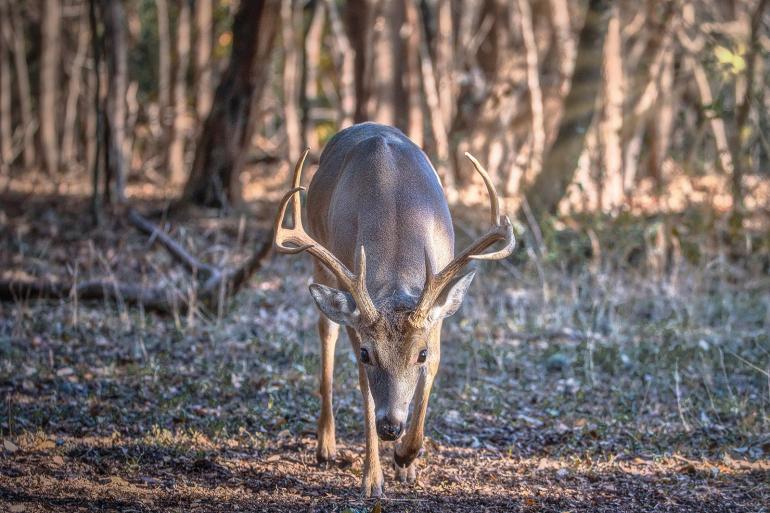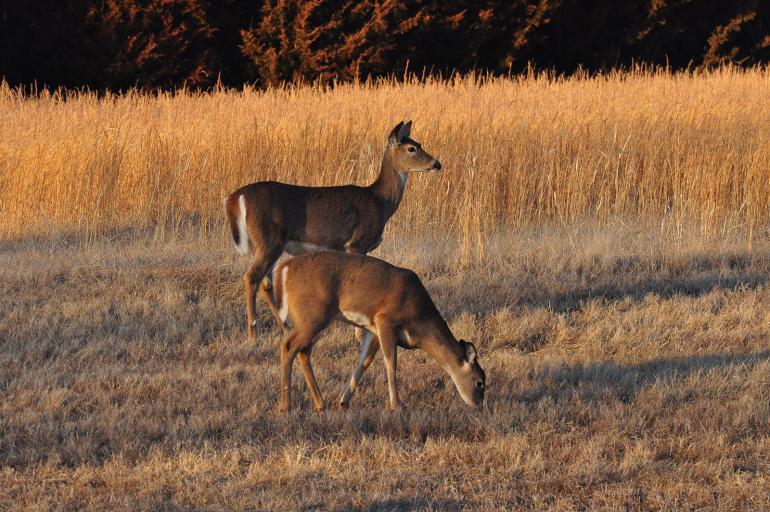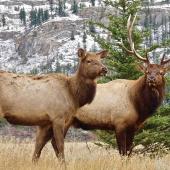High and Whitey
Whitetail hunting in Montana.
It was silent, save for the breeze. Dying cottonwood leaves fluttered downward, silhouettes against a moody grey sky. Grandpa, Dad, and I rested among a stack of haybales, eyes fixed to binocs, scanning the horizon for movement. It was the last dawn of hunting season. We had one tag left to fill.
At 10 years old, I was too young to carry a rifle. Instead, I packed two brown four-point sheds, prepared at a moment’s notice to clash them together if given the “okay.” An hour went by and we saw nothing. Grandpa gave me a nod and I jumped to attention, releasing my boyish excitement through a chorus of rattling and raking. Not a minute later Dad caught a flash along the edge of a cattail-choked ditch. What is it? Grandpa and I inquired. It’s a whitetail buck, and he’s coming.
Habitat
Montana is home to an abundance of white-tailed deer, over 200,000 in fact. And while unlikely to cultivate record-smashing monsters like the Midwest is renowned for, opportunities to pursue the western whitetail are bountiful here. Healthy numbers across a wide range make the animal an ideal candidate for newer hunters looking to cut their teeth chasing large game.
Whitetails are one of the country’s oldest big-game species, their existence dating back four million years. Over time, these animals have earned a reputation as being incredibly adaptable. This is true for their choice of habitat, diet, and tolerance to humans. It’s generally accepted that whitetails live at lower elevations than mule deer, but their range is expansive, and only getting more so. Equally likely to be seen in an ag field as a conifer forest, or a riparian bottom as an open prairie, whitetails inhabit terrain representative of their preferred food. From wilderness areas to suburban sprawl, look for them munching on forbs, shrubs, and fruit. And though they’re primarily browsers, nothing stops them from eating grasses, too.
Behavior
Whitetails and mule deer share as many differences as they do similarities. They both have an impressive sense of smell, rut during roughly the same time (see below), and are crepuscular, or, in other words, are most active during early morning and at dusk. Where they differ is large-scale movement patterns. Whitetails, unless pressured by predators, are known to occupy the same piece of ground for their entire lives. Unlike elk and mule deer, they don’t split time between winter and summer range. This can make patterning specific animals easier. Mind you, these are not stupid critters. Along with a keen nose, they often know property boundaries and stick close to thick cover, making sure to never be more than a bound or two away from disappearing forever. When they do spook, it’s unlikely that they’ll stop to give you a second chance.
Rut
There’s a ton of lore—some of it proven, a lot of it not—orbiting the whitetail rut. You’ll hear things about moon phase, temperature, and daylight. What you need to remember is that it typically happens sometime in mid-November. This roughly two-week time period is undoubtedly the most active of the whole season. Does enter estrus and bucks want action, simple as that. If you want to increase your odds of seeing deer, hunt during the rut—rattle, grunt, and mimic other sounds if you want, but just being out and about during this time increases your odds.
Gear
On the smaller end of the ungulate-size spectrum, whitetails range from small adult does weighing around 125 pounds to big bucks exceeding 250. When choosing a rifle, look for something between a .243 and a .30-06. Any higher and you’re looking at overkill and meat loss. Any lower and your risk of wounding the animal goes up.
Along with the standard gear that goes on every hunt—binocs, boots, knives, and whatnot—some specialized equipment can go a long way. If you’re hunting in archery season, a tree stand is a valuable tool, as is a trail cam (Montana’s fair-chase regulations limit the use of certain trail cameras; check with FWP for details). Being that whitetails are relatively local critters, photos you capture in the summer should be representative of the deer living there year-round. When the rut rolls around, it doesn’t hurt to pack a pair of rattling antlers along. Experts have varying opinions as to how to approach this, but as a general rule of thumb, less is more. And after you’re done rattling, wait a little longer than you think before picking up and moving. Just because they don’t come in running doesn’t mean they’re not coming in at all.
Bow vs. Rifle
Both can get the job done, but unless you have access to a section of private ground where you can consistently spend time in a tree stand, a rifle is probably the way to go. In southwest Montana, many public sites are “weapons-restricted,” meaning a person is limited to a bow, pistol, muzzleloader, or shotgun. It’s often easier to sneak into close range here, as the deer don’t spook as easily as places where they’re hunted with long-range rifles.
Pack-Out
As with all game, meat-preservation should be top of mind as soon as the animal hits the ground. The time of year, how far you are from a road, and whether or not you have buddies with you will dictate how best to get that animal back to the truck. This could be lassoing a rope around its neck and dragging it whole. Or you may need to cut it into quarters, hang it in a tree, and hump it back in loads. The big thing here is to have a pack-out plan before you leave the truck. Make sure to consider all the gear you’ll be carrying with you on top of all the weight you’ll be bringing out.
Regs
Whitetails are Montana’s most beginner-friendly big-game animal to hunt. An over-the-counter tag is good for almost every single district in Montana. On top of that, additional doe tags are available for purchase, with some seasons lasting into January. As always, consult the FWP official regulations for the specific district you plan to hunt.
Grandpa’s hand grasped the .270 and his cheek kissed the stock as he peered through the scope. Dad whispered distances as the four-point drew closer. 300. 250. 225. At 200 yards, the buck turned broadside. Grandpa was dead on him and didn’t hesitate for a second.
Though 20 years ago, this hunt remains etched in my mind as an all-time favorite. Grandpa was proud of the buck, but even more proud of me. He has since passed, but this memory of him never will. I’m not sure what happened to the European mount we had made, but the antlers I used to rattle in that whitetail still sit on a shelf in my room.












